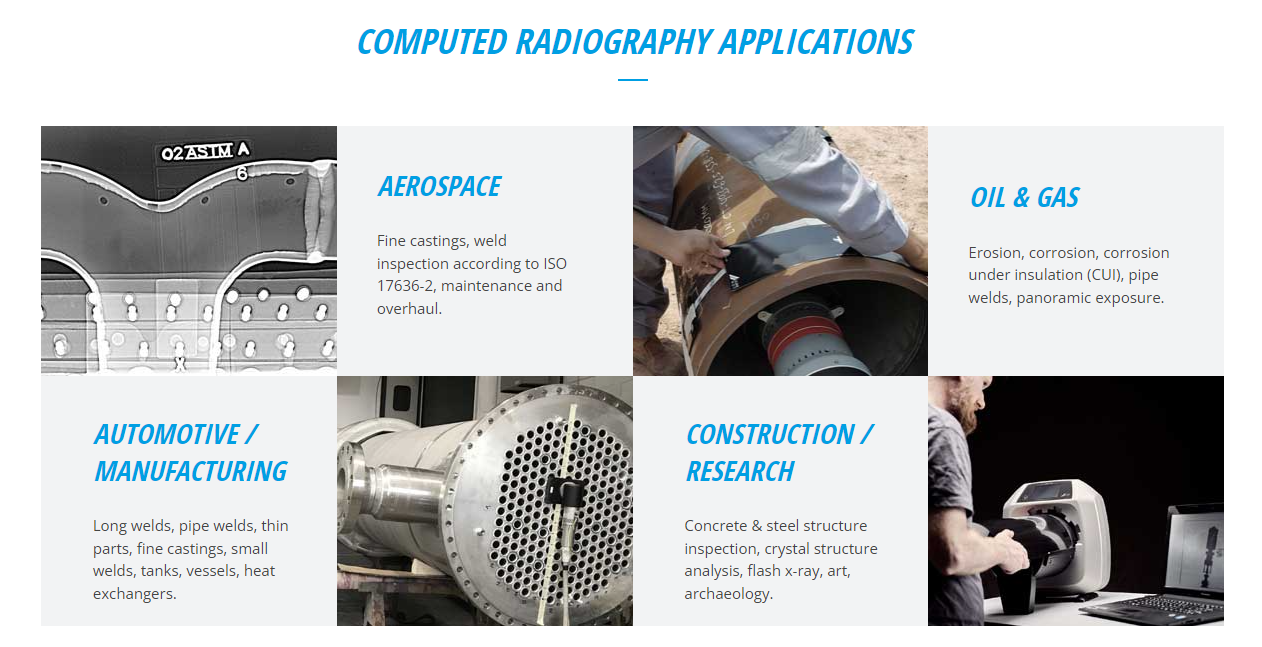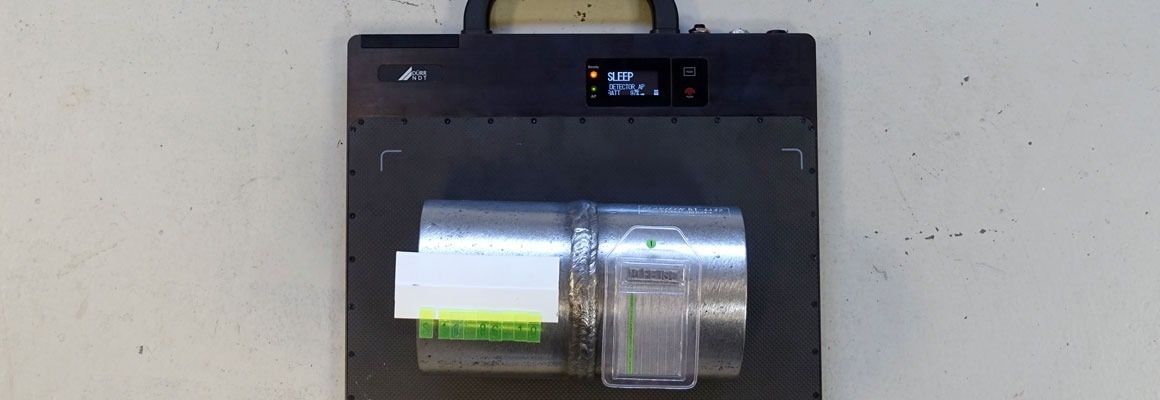In this interview, Dürr NDT discusses the main differences between Computed Radiography and Digital Detector Arrays.
Can you please introduce your company?
Dürr NDT is a German company based in Southern Germany. We specialize in digital radiography for industrial applications and have dealers worldwide. Our software development largely takes place in Malaysia and we conduct in-house R&D for many of our products.
We have been in operation for nearly two decades but are a subsidiary of a larger company, Dürr Dental, which has been established for a much longer period. Our product range encompasses everything related to digital radiography, including computed radiography scanners, imaging plates, and direct radiography, such as flat panel detectors or DDAs. Since these products are digital, we also develop software to accompany them.
Can you explain what computed radiography is?
Computed radiography (CR) uses flexible imaging plates in combination with a scanner. A scanner is necessary to read these plates.
The imaging plate is reusable. If you are transitioning from a conventional film, there is not much you need to change. You must swap your film with the imaging plate and acquire a scanner. The techniques used with the film apply to CR, so there is no need to relearn the fundamentals of radiography. You are more or less replacing the film with an imaging plate. Although the evaluation process differs significantly, it remains quite similar technique-wise.

Image Credit: DURR NDT
Can you explain what digital detector arrays are?
Digital detector arrays (DDAs) are typically rigid and cannot be bent, and no processing step is involved. With a DDA, the image is more or less obtained in real-time, making the process quicker. However, because of its rigidity, additional considerations exist when capturing an image. DDAs require power and communication, which may necessitate cabling or consideration of wireless transmission options.
Moving from film to DDA is also relatively straightforward. Before I continue, I think some important terms should be mentioned. Signal-to-noise ratio (SNR) can be considered a contrast, akin to what we discuss in traditional radiography. Basic spatial resolution (SRB) refers to the smallest detail visible in an image.
These terms are commonly used in digital radiography and are frequently referenced in major standards such as ISO 17636-2. It is crucial to understand these terms. Although DDAs stand for digital detector arrays, many people simply refer to them as flat panel detectors.

Image Credit: DURR NDT
What are some of the differences between CR and DDA?
DDA performs better than CR when it comes to signal-to-noise ratio or contrast. DDAs also provide quicker image acquisition, almost in real-time.
Both CRs and DDAs have lasting technologies; for instance, we have scanners in the field that have been operational for more than 10 years. However, it is worth noting that the consumable imaging plates in CR usually need replacement after around 1,000 scans due to scratches and damage from handling.
On the other hand, DDAs are electronic devices and are susceptible to radiation damage. Nonetheless, with proper shielding, they can last a long time. Cost-wise, both solutions are very similar in terms of investment. It is important to note that DDAs do not require consumables like CR, where imaging plates are consumable items. Regarding image quality, imaging plates can achieve resolutions down to 30 microns, whereas the resolution of DDAs is usually fixed based on the pixel size.
Let us delve into the practical aspects of using these devices. Both CR and DDA can be used with a variety of radiation sources. However, CR is generally considered more flexible. It can be used with high-energy sources such as cobalt isotopes or even LINACs. However, the dose time increases with higher energy sources. Imaging plates are more sensitive to lower energies, necessitating the use of higher-sensitivity image plates and longer doses with higher energy sources.
With DDAs, however, using higher energy sources requires shielding due to their electronic nature. This sometimes limits their application in relation to the radiation source.
Unlike DDAs, where you obtain the image almost instantly, with CR, you need to scan the imaging plate, which can sometimes take minutes. A useful advantage of CR is that the scanner and the imaging plate are separate components, allowing for the use of multiple imaging plates and exposures in different bunkers.
What kind of maintenance do both these solutions require?
Maintenance for both solutions is minimal. CR may require light mechanical maintenance every few years, but overall, the maintenance effort is quite low for both. DDAs perform better in an automated setting. Unlike CR, which requires manual positioning and scanning of imaging plates, DDAs can remain stationary in a cabinet and facilitate automated inspection, possibly with the assistance of manipulators or robotic systems for part positioning.
DDAs are particularly advantageous in automation industries and for live inspection of moving parts. There are dynamic panels available on the market, capable of capturing 20 to 30 frames per second. However, using DDAs in the field requires some considerations. Typically, a live connection to the DDA is needed, requiring either an Ethernet cable or wireless connectivity.
This can sometimes be difficult, especially if the DDA is in a hard-to-reach place. On the other hand, imaging plates are lightweight and versatile, requiring no power or cables, making them easy to place almost anywhere. Comparing the workflow to film, both CR and DDA are fairly similar. However, with DDA, there is a little bit of a learning curve associated with calibration procedures.

This information has been sourced, reviewed and adapted from materials provided by DÜRR NDT GmbH & Co. KG.
For more information on this source, please visit DÜRR NDT GmbH & Co. KG.
Disclaimer: The views expressed here are those of the interviewee and do not necessarily represent the views of AZoM.com Limited (T/A) AZoNetwork, the owner and operator of this website. This disclaimer forms part of the Terms and Conditions of use of this website.